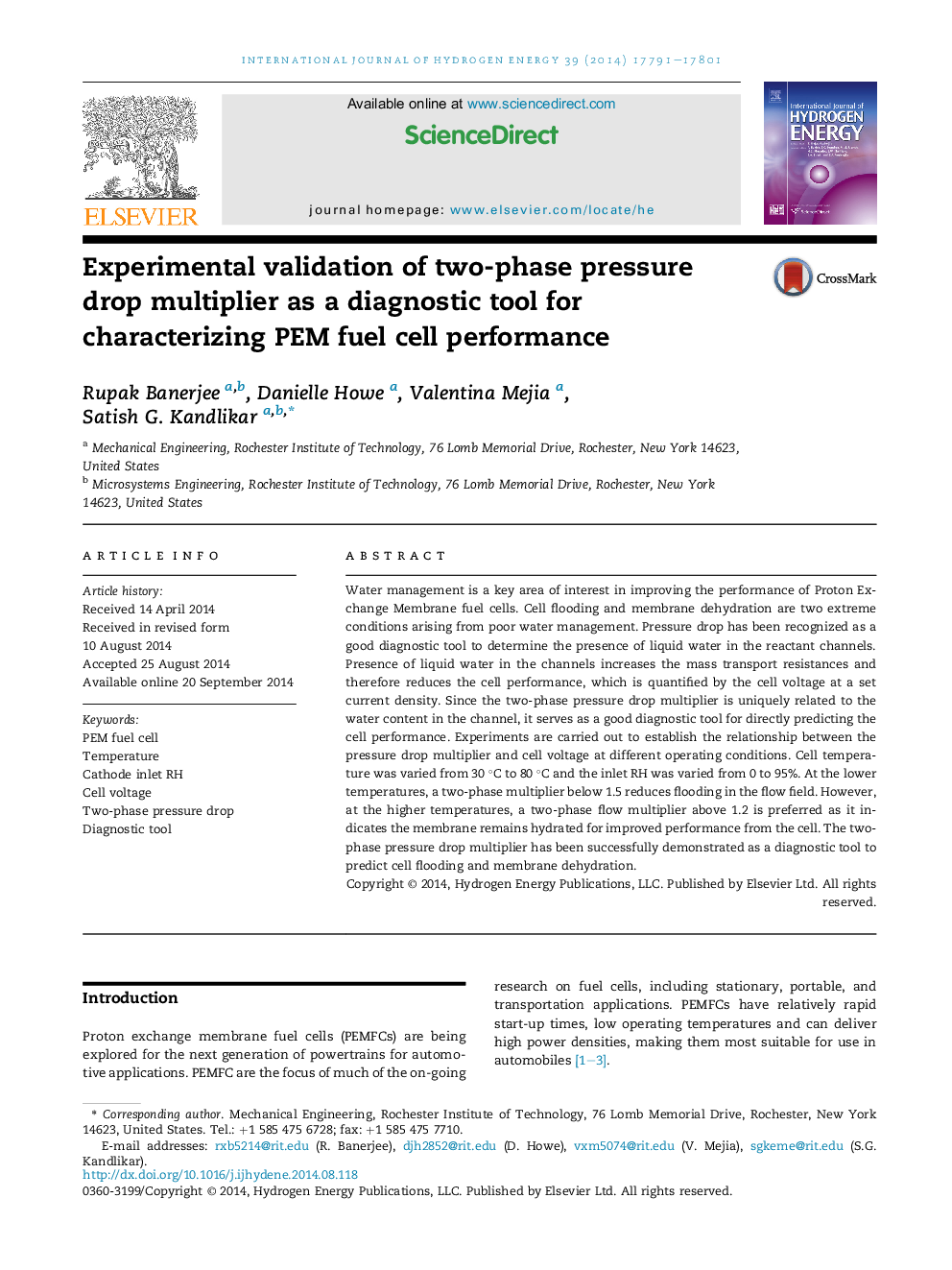| Article ID | Journal | Published Year | Pages | File Type |
|---|---|---|---|---|
| 1271875 | International Journal of Hydrogen Energy | 2014 | 11 Pages |
•Used two-phase pressure drop multiplier to quantify liquid water.•Correlated cell performance with two-phase pressure drop multiplier.•Investigated the effect of presence of liquid water in channels on cell performance.•Investigated pressure drop and cell performance at different operating conditions.•Proposed two-phase pressure drop multiplier as diagnostic tool for flooding.
Water management is a key area of interest in improving the performance of Proton Exchange Membrane fuel cells. Cell flooding and membrane dehydration are two extreme conditions arising from poor water management. Pressure drop has been recognized as a good diagnostic tool to determine the presence of liquid water in the reactant channels. Presence of liquid water in the channels increases the mass transport resistances and therefore reduces the cell performance, which is quantified by the cell voltage at a set current density. Since the two-phase pressure drop multiplier is uniquely related to the water content in the channel, it serves as a good diagnostic tool for directly predicting the cell performance. Experiments are carried out to establish the relationship between the pressure drop multiplier and cell voltage at different operating conditions. Cell temperature was varied from 30 °C to 80 °C and the inlet RH was varied from 0 to 95%. At the lower temperatures, a two-phase multiplier below 1.5 reduces flooding in the flow field. However, at the higher temperatures, a two-phase flow multiplier above 1.2 is preferred as it indicates the membrane remains hydrated for improved performance from the cell. The two-phase pressure drop multiplier has been successfully demonstrated as a diagnostic tool to predict cell flooding and membrane dehydration.
